

50 Glebe Place, Chelsea (1985-87). Rebuilt to the specifications of Frank Lowe. Left: Perspective view. Right: One of the windows with its metalwork and ivy-covered wall. Bridget Cherry and Nikolaus Pevsner's later twentieth-century dates for this eccentric building (see p. 576) are surprising but perfectly accurate, although they give no hint of its complicated history before those years. [Click on the images to enlarge them.]
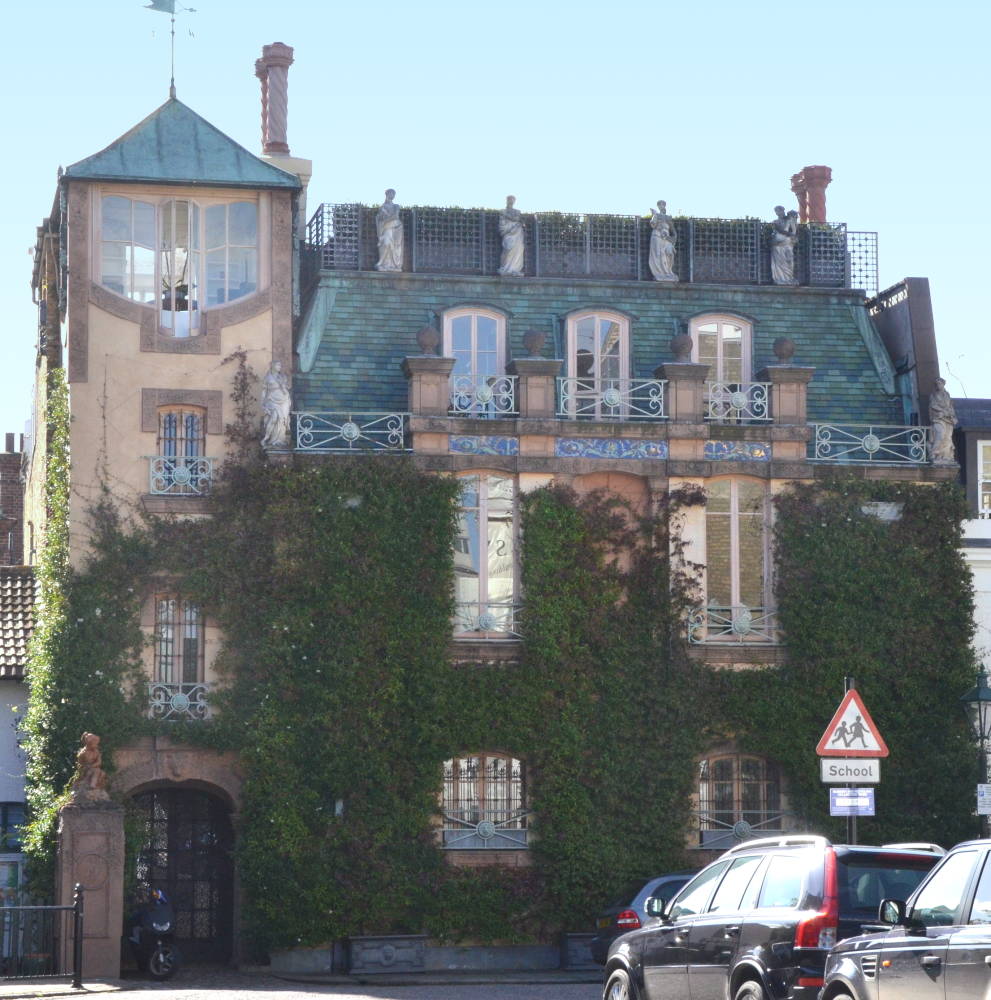

Left: Front elevation. Right: Window in the tower.
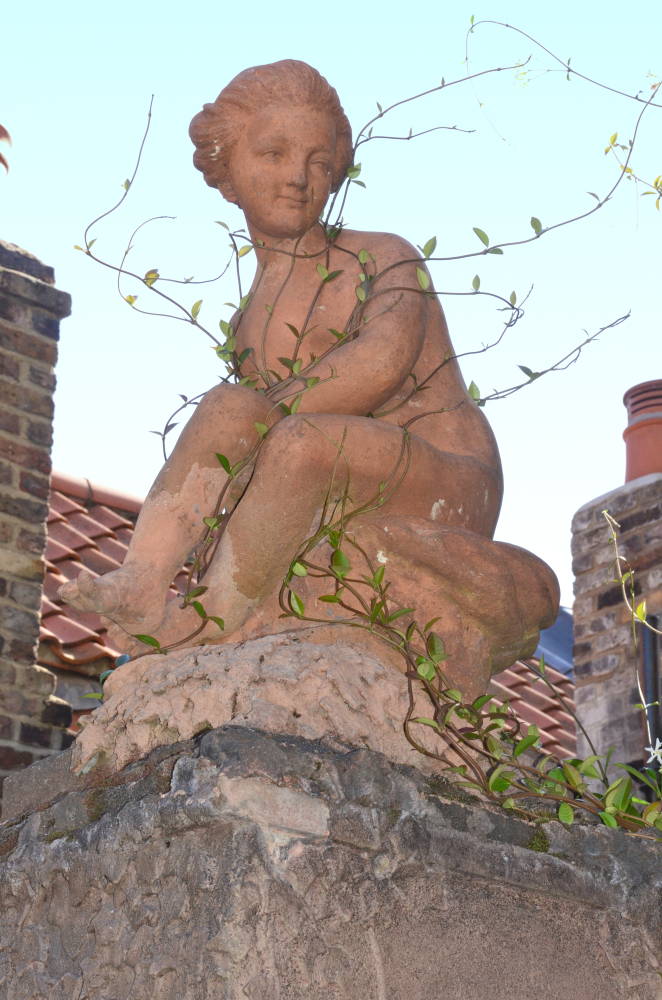
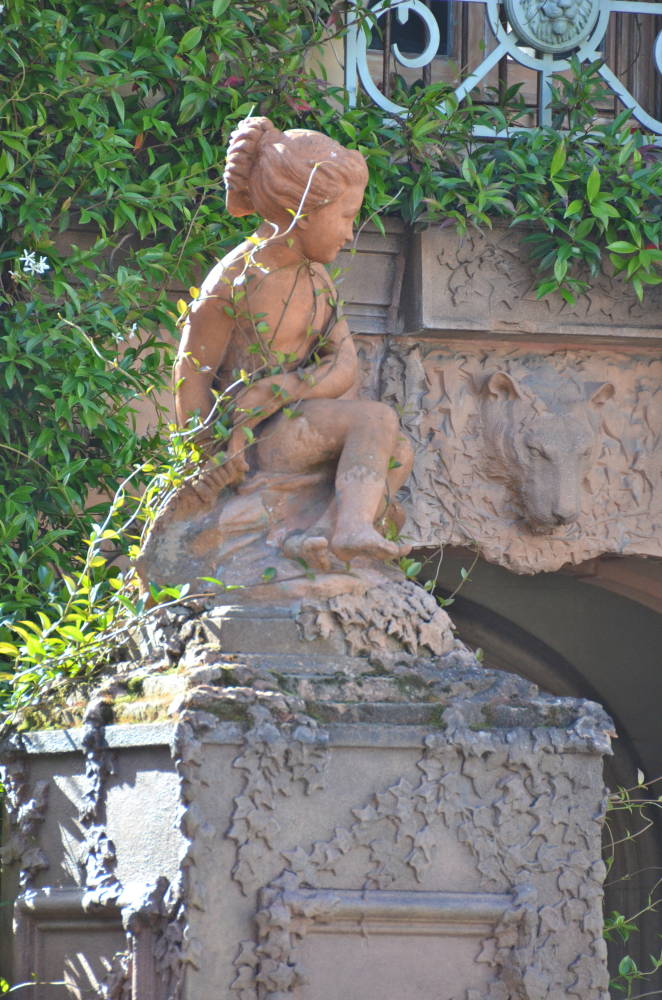
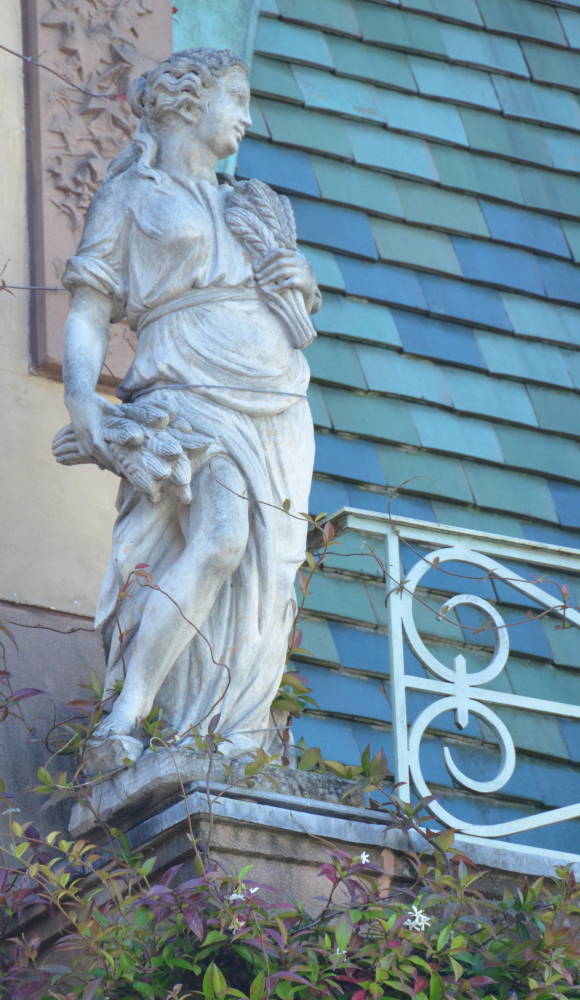
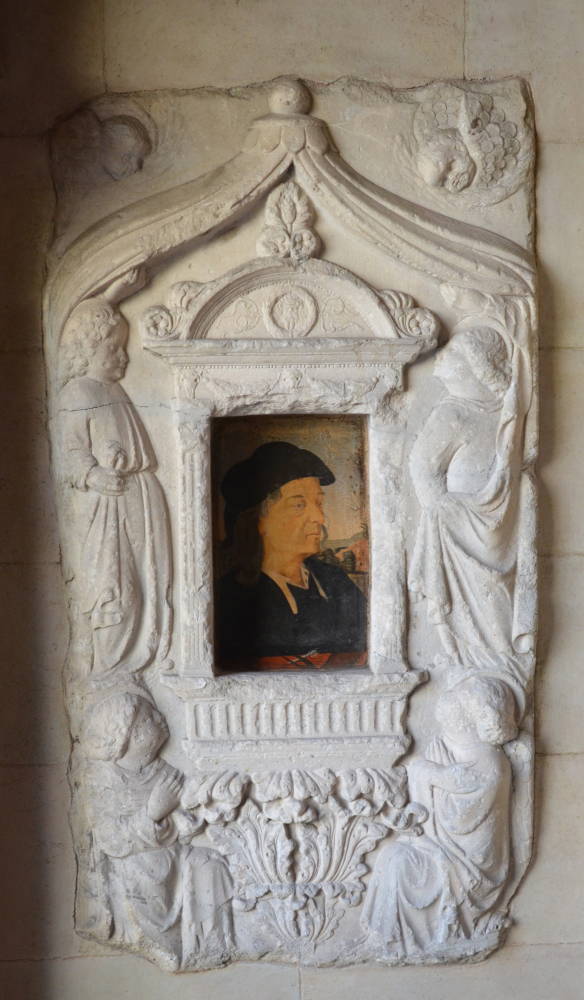
Sculpture on and around the house. Left two: Terracotta statue of a girl seated on a pillar, which has the same pattern of raised leaves as the building. Middle right: One of the six standing statues on the roof of the building. Right: Bas relief frame inside left of the doorway.
Commentary
The history of Glebe Place goes back to the earlier part of the twentieth century. It was originally intended for artists’ studios: the advertising executive Frank Lowe bought it after it had been used as a photographic and commercial art studio with some residential accommodation. Notes on the Royal Borough of Kensington and Chelsea's planning portal indicate that the building was “substantially rebuilt” by Lowe to turn it into a single family dwelling, with staff accommodation.
Lowe's architects stated that he wanted “to build upon and restore the building’s links with the Arts and Crafts movement.” A concerned neighbour supporting the change of use suggested that parts of the building had been designed by Charles Rennie Mackintosh, including fittings and two remaining fireplaces, the latter being verified by professional photographer Simon Brown, who worked there from approximately 1979 to 1983, and confirmed in correspondence with us that there was a Mackintosh fireplace in each of the two ground-floor studios: "They were distinctive and made of brickwork and tiles," he explains, adding that unfortunately they had both been badly damaged, "with boilers 'hacked' into them some time in the early 1970s." They had then, he says, been "concealed in cupboards with louvre doors."
Mackintosh had certainly been busy in this area: he had had a studio at 43A Glebe Place and designed 49 Glebe Place next door to no. 50. He had also designed a studio house for 50 Glebe Place itself, for the sculptor Derwent Wood (including at least one fireplace), although his overall design had never been built. Instead, Wood had built a "much less ambitious building" on the site in 1923 (see "M341 Design for a building..."): his initials were (perhaps are) on the water hoppers.
Given the significant additions of three dormer windows at the front of the house, and the raising of the tower with a third floor conservatory, as well as the incorporation of new urns and tiles, another correspondent, Chris Dawes, sees the "rebuilt" premises at no. 50, which won a local award, as not exactly a restoration, but "surely more a palimpsest."
Many thanks to both Chris Dawes and Simon Brown for giving us further information about the building's history, and the presence (and fate) of the fireplaces.
Photographs and captions by George P. Landow, and commentary and formatting by Landow and Jacqueline Banerjee. [You may use the images without prior permission for any scholarly or educational purpose as long as you (1) credit the photographer and (2) link your document to this URL in a web document or cite the Victorian Web in a print one.]
Bibliography
Cherry, Bridget, and Nikolaus Pevsner. London 3: North West. “The Buildings of England.” New Haven and London: Yale University Press, 2002.
M341 Design for a building containing studios for Francis Derwent Wood, Chelsea, London. Mackintosh Arcrchitecture: Context, Making and Meaning (Catalogue entry). Web. 3 May 2024.
Last modified 17 November 2025